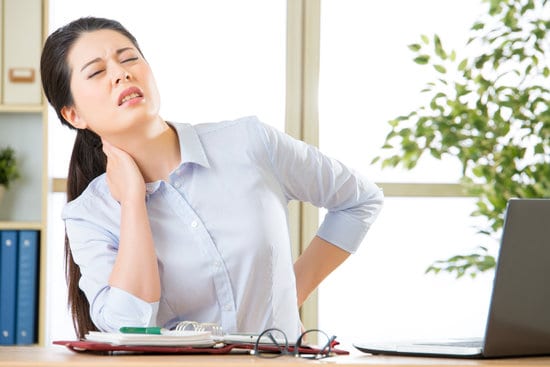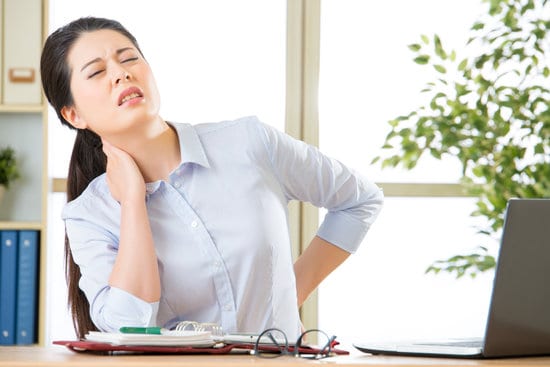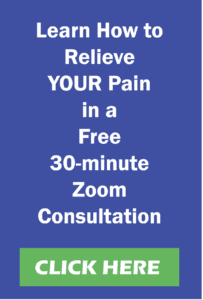Mid-Back pain, learn the causes, then cure it. Most people will suffer from the back either low back or mid-back pain. Everywhere you look there are videos and blog posts from personal trainers to MDs discussing it and offering every type of cure in the world. The question though is if we have all this knowledge, why do 80% of the people have back pain and why can’t we stop it? As in all my posts, I believe that before you can solve a problem, you must know the real cause. It’s like being a boat that is sinking. Yes, there is water in the boat. Yes, we need to get the water out of the boat, but if don’t find out how the water is getting into the boat, the boat will sink while we are bailing buckets of water out. Back pain is an example of us bailing the water out of the boat as the boat is slowly going underwater.

The True Causes of Mid-Back Pain
Most people blame mid-back pain on posture, sitting in front of a computer, or how we generally hold ourselves in a seated or standing position. This is partially true, but let’s look at what is really going on. The head plays an important role in mid-back pain. The head weighs between 10-12lbs. sitting on top of your shoulders. As your head leans forward, the weigh at the base of your neck and into your mid-back area can double and triple. The muscles in your neck, chest, and upper back provide you the support you need to hold your head upright. Before you run to the gym to make those muscles stronger, there is more to the story. Over time, as you get in the habit of leaning your head forward, the muscles in your chest and the front of your neck will become short. This increases the pressure on the backside as the muscles in the upper back and back of your neck will overwork as they must lift the weight of your head and pull against the shortened muscles on the front side. Since the muscles are firing on the backside, the muscles will become shorter and increase the compression on the vertebrae in the mid-back area. This can lead to bulging or herniated discs or pinched nerves. The long-term effect can be difficulty in breathing deeply which will affect your stamina as you age. Once you understand the cause of mid-back pain, you can cure it easily and forever. Great stretches for the low body are https://musclerepairshop.com/2020/01/the-best-stretches-to-do-every-day/?preview_id=1197&preview_nonce=2f48867e47&preview=true&_thumbnail_id=164
The Cure
Most treatment plans include strength training for the muscles between the shoulder blades and upper back. They may include changing the configuration of your computer setup if the pain occurs while working on a computer or getting a different chair to watch TV. Some plans include back braces to force your shoulder back wile others will include injections. At first glance they all seem like good solutions. However if we go back to the causes of the pain, we can see that these are all temporary relief ideas without ever addressing the true cause.
The best way to cure mid-back pain is by stretching both major chest muscles. I am not talking about chest stretches you see at the gym or chest stretches that have you standing in a corner pushing forward to stretch bot sides of the chest at the same time. The ones at the gym are more strength training than stretching. If you think that doing butterflies on a chest machine is stretching, nothing could be farther from the truth. Standing in a corner or doorway trying to stretch both side of the chest at the same time is a very limited stretch because your shoulder blades block you from stretching your chest and the outside chest muscles are not stretched either. The outside chest muscles contribute a lot to the mid-back pain you are feeling.
The chest stretch I use allows you to focus on both chest muscles and you only stretch one side at a time. Standing in a doorway, place one arm on the door frame, forearm is against the door frame as the upper arm is parallel to the floor. Use only your feet and slowly rotate your body away from the arm on the frame. In other words, if it is your left arm, turn right. If you feel a pull or cramp on the left side, you are twisting your body and not using your feet. Be conscious enough to actually feel the chest stretching. I don’t care how far you turn, this is not a competition, but a releasing of the muscles. Hold the stretch for only 5 seconds and repeat it 10 times.
Next, while in the same position, shift your left hand from the door frame to the back of your head. This is will allow you to stretch the outside chest muscle. You will do the same movement as above, but feel the stretch in the outside chest versus the middle chest muscle. The outside chest muscle is what causes the shoulder to round in. Few people ever stretch those. You can see the videos here for the middle chest, https://youtu.be/WJgEcNZAoTs, and here for the outside chest, https://youtu.be/pkEOESaZFus.
Conclusion
Mid-back pain. When you understand the true cause, solving it becomes easy. I have seen many people that have suffered through surgery after surgery with little relief from pain only because the doctor wasn’t looking for the reason why it happened, but the end result of why it happened. Once we can unlock the chest muscles, the pain, even after surgeries can reduce and in some cases stop. The trick is realizing you have to do the work yourself because it is your brain that must release the pressure of the shortened muscles and no one else can do that for you. Our education can help you locate the cause and give you solutions, but ultimately it is up to you to solve it. For more information on my Stretch n’ Release Technique, go to https://www.musclerepairshop.com.


